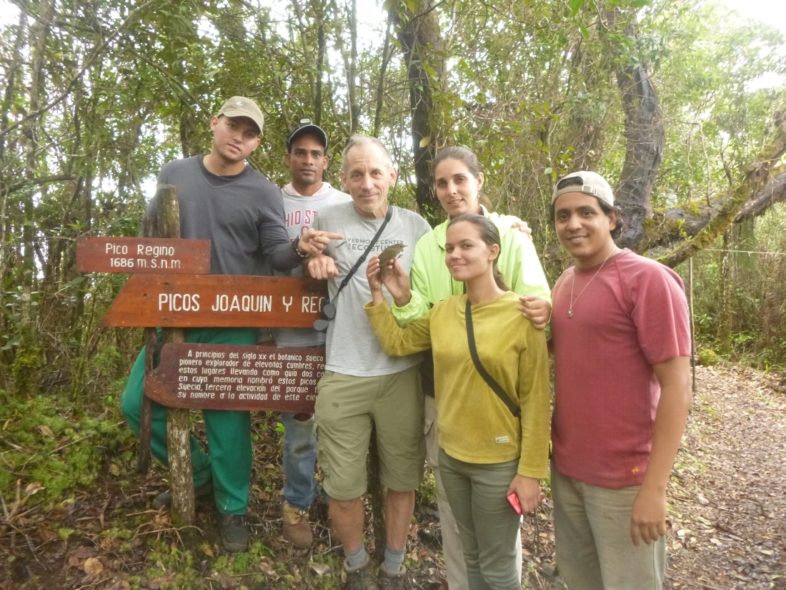
VCE-BIOECO field team with the first Bicknell’s Thrush ever to receive a Cuban bird band, #TA0242, 29 January 2018. From left: Jose Ramon Fuentes, Amauris Rapado Cruzata, Chris Rimmer, Carmen Placencia Leon, Leydis Sanchez Zaldivar, Allan Mendez Hernandez.
An abnormally rainy winter season, Cuban protected area permits that failed to materialize, even the official closing of Parque Nacional Pico Turquino – no hurdle could deter Team VCE-BIOECO from its quest to conduct Bicknell’s Thrush (BITH) surveys in the highest-elevation cloud forests of Cuba’s Sierra Maestra. Moments of serious doubt and angst set in after a mid-morning phone call on 26 January to El Centro Oriental de Ecosistemas y Biodiversidad (BIOECO) headquarters in the Museo de Historia Natural “Tomás Romay”, informing our team of six that the park we would visit <24 hours later was closed due to persistent rains. Our supreme, no-nonsense organizer Yasit Segovia leapt to action — by 2 pm, crisis averted, and we were granted a special exemption to enter the park. A frenzy of food purchasing, protocol checking and gear packing followed. Departure: 0500 tomorrow.
Our double-cabin 4WD BIOECO truck rumbled out of Santiago de Cuba at 0530 on 27 January, a blue tarp mounded over backpacks and two duffels with nearly a week’s worth of food for 6 biologists, all of us crammed inside the cab. Four-plus hours later we loaded two mules in the sleepy village of Santo Domingo on the rain-swollen Rio Yara, then set off on the 8-km hike to our base camp at Aguada del Joaquin, a primitive park ranger station nestled in lower montane humid forest at 1364 m elevation. A steady rain descended during the final 2 km of our climb, and with waterproof gear stashed in our mule-transported backpacks far behind us, we were soaked and chilled when we pulled in to Aguada at 1700. Gratefully exchanging clothes an hour later when the mules arrived, we devoured an open fire-cooked dinner of pasta, rice, tomato sauce and fried beef. Cuban Solitaires and Red-legged Thrushes serenaded us as dusk settled.
The next four days were a blur of pre-dawn risings, labored slogs by headlamp up the wet and absurdly steep trail to Pico Joaquin (1,676 m elevation), then fanning out in two teams along the ridgeline to survey for our quarry. Having found exactly zero BITH in these cloud forests last March, following our Canadian colleagues’ mid-winter discoveries of 15+ birds in the early 2000s, we weren’t sure what to expect, though I had confidence we wouldn’t entirely strike out. Between dawn and ~0900 each morning, both teams conducted 5-6 10-minute point counts spaced 250 m apart, each with two 1-minute playbacks of recorded BITH calls. These counts were followed by near-continuous broadcast playbacks as we hiked back down to camp, knowing that no self-respecting BITH can resist responding to a perceived territorial intruder!
Our exertions were hardly in vain – over four days, we found 7 BITH in these cloud-drenched forests across >7 km of ridgeline, at elevations between ~1700 and 1900 m. Not exactly a mother lode, but a respectable total. One cluster of 3 birds called simultaneously from the east slope of Pico Cuba, while the other 4 individuals were widely scattered. We managed to mist net 2 birds, and our BIOECO friends were thrilled to place the first Cuban bands ever on a “Tordo”, the colloquial name for BITH in Cuba. Three of these latter 4 BITH were relocated on multiple mornings, suggesting that they held territories, as the species does on Hispaniola. The two banded birds were almost certainly males, judging from their very long wings. Our point counts and playback surveys in lower-elevation wet forests failed to detect any BITH, not a great surprise.
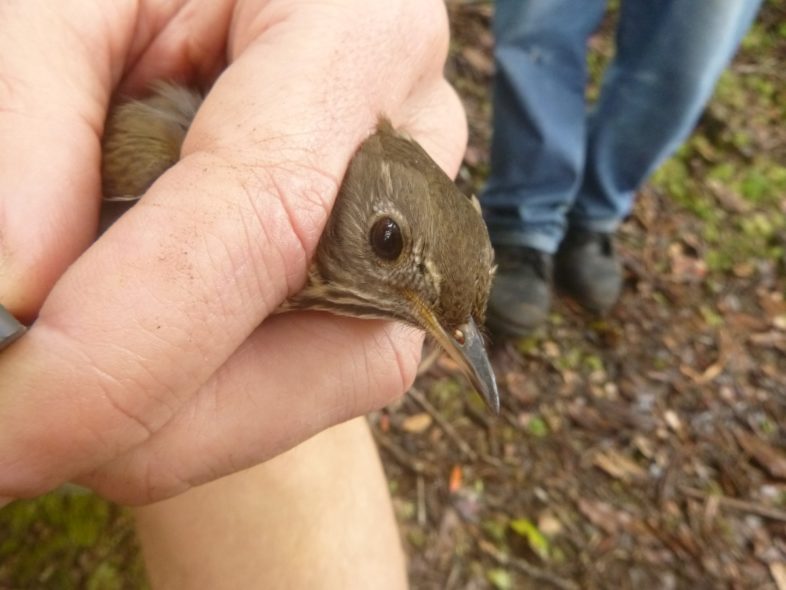
BITH #TA0242, the first “Tordo” (the species’ Cuban name) to ever receive a Cuban band. Pico Regino, elevation 1686 m, 29 January 2018.
As is so often the case with this enigmatic bird, we left Pico Turquino faced with perplexing questions about the current status of BITH in Cuba’s highest region, given its apparent absence (or complete unresponsiveness) during our late March 2017 surveys and this January’s much-reduced abundance from that recorded by our Canadian colleagues in December-February of 1999-2005. On the one hand, we’re encouraged to have found several BITH in what we consider “prime” cloud forest habitat, albeit at low densities of < 1 bird per linear km. I’m confident we didn’t miss birds that may have been present, due to our thorough coverage at optimal times of day for playback response (dawn to ~10 am), in generally favorable weather (mostly overcast, drizzly, calm).
BITH always seem to have the last word, and this expedition proved no exception, raising many more questions than it answered about the overwinter status of this elusive species on Cuba. Disappointingly, permit restrictions precluded my visit to the island’s largest tract of unbroken cloud forest in Parque Nacional Bayemesa, on Sierra Maestra’s eastern frontier. This area has scarcely been surveyed for BITH, though a few scattered records have emerged over the years. Our BIOECO partners hope to travel by mule and foot into Bayemesa later this winter, if the rains ever stop (the park is currently closed). If they’re thwarted (and maybe even if they aren’t), I’ll be only too eager to foray with them deep into the heart of those little-known mountains a year from now. My gut tells me that Cuba harbors many more BITH than it has so far revealed to us, and that it trails only Hispaniola in importance as an overwintering refuge for the species. However, until we’re able to piece together a more complete picture, I’ll be content to let the haunting, dissonant songs of Cuban Solitaires resonate in my memory bank. This endemic – one of Cuba’s 26, and my runaway favorite – epitomizes for me the splendor of Turquino’s pristine cloud forests and the significance of VCE’s work there. Of that, much remains to do, and there is no question of a return visit in 2019.
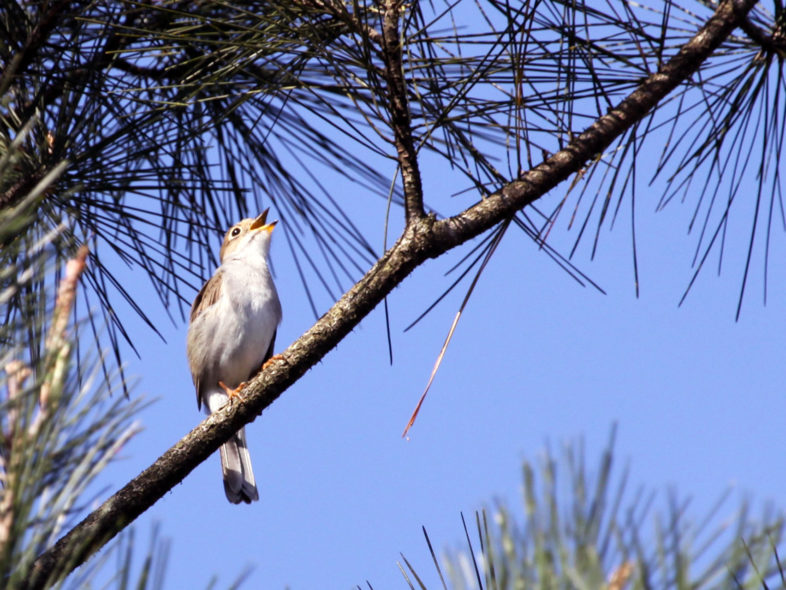
Cuban Solitaire (Myadestes elisabeth), arguably the island’s most accomplished songster. Photo courtesy of Nicasio Vina Davila.
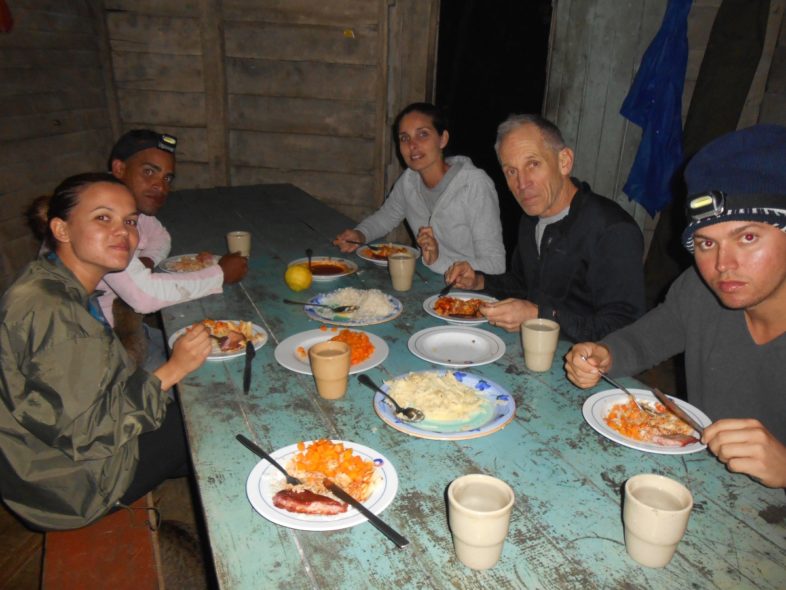
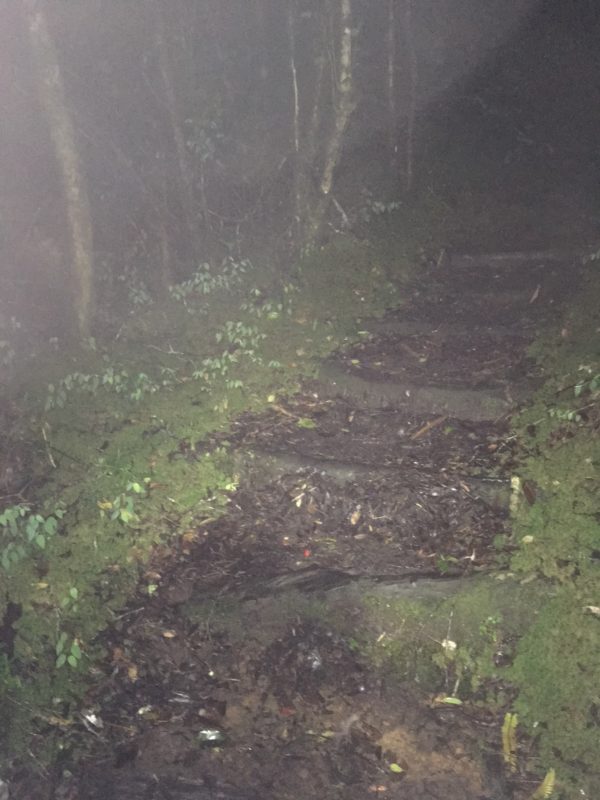
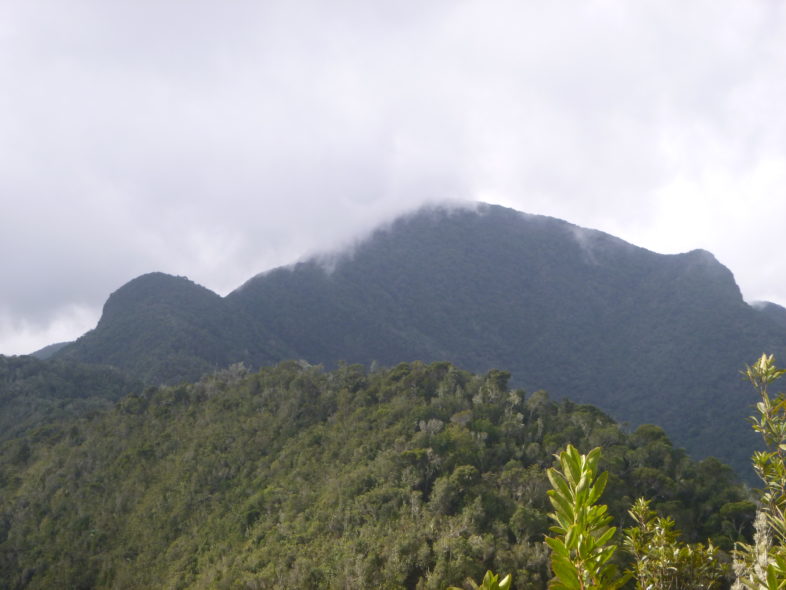

What an interesting report on your trip!
The song of the Cuban solitaire is lovely.
Thanks for the arm chair tour.
Thanks so much for sharing your journey and results!! Very exciting!!
Skilled narrative and edge of seat hopes for BITH, who could ask for more! Thanks, Chris!
Loved this. Promising – and looks like a lot of fun to boot!
Fantastic Rim … Great trip ! —thanks for sharing
Now there is a real adventure! Good work Chris. See you in a few days in Boston, Jeremy
Thanks for a very interesting report. We head in Cuba in April to participate in a biodiversity mapping project. We most likely won’t encounter BITH but should be educational.
Keep up the great work, Chris! This is a fantastic story that reminds me of my days in New Guinea….